Related Research Articles
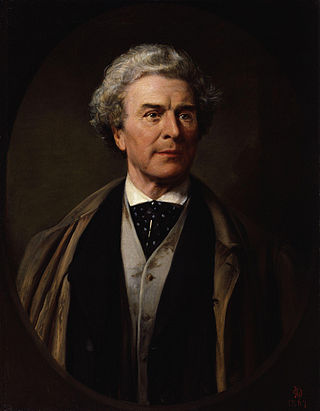
Thomas Hare was a British lawyer and chariy official, a supporter of electoral reform. In particular he is often credited as the inventor of the Single Transferable Voting system of which he was a proponent and defender, now used in many places in the world.
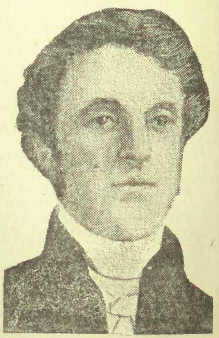
Henry Sherwood, was a lawyer and Tory politician in the Province of Canada. He was involved in provincial and municipal politics. Born into a Loyalist family in Brockville in Augusta Township, Upper Canada, he studied law and was called to the bar of Upper Canada in 1828. In 1838, he was appointed Queen's Counsel. Sherwood was part of the Family Compact, the inter-connected families of strong British and Loyalist sympathies which dominated the government of Upper Canada in the early years of the 19th century

William Bingham Baring, 2nd Baron Ashburton, was a British businessman and a Whig politician who later became a Tory.
The New-York Mirror was a weekly newspaper published in New York City from 1823 to 1842, succeeded by The New Mirror in 1843 and 1844. Its producers then launched a daily newspaper named The Evening Mirror, which published from 1844 to 1898.

Lawrence Brainerd was an American businessman, abolitionist and United States Senator from Vermont. A longtime anti-slavery activist, after leaving the Jacksonians in the 1830s, Brainerd was active in the Whig, Liberty, and Free Soil parties, and was one of the organizers of the Republican Party when it was formed as the main anti-slavery party in the mid-1850s. Brainerd's longtime commitment to the cause of abolition was recognized in 1854, when opponents of slavery in the Vermont General Assembly chose him to fill a five-month vacancy in the United States Senate.
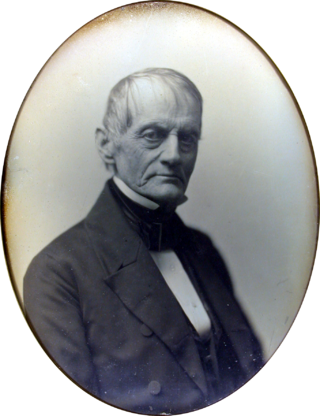
William Appleton was an American businessman and politician from Massachusetts. He was a trader, shipowner, and banker, and served as a U.S. representative from Massachusetts from 1851 to 1855, and again from 1861 to 1862.

The Randolph family of Virginia is a prominent political family, whose members contributed to the politics of Colonial Virginia and Virginia after statehood. They are descended from the Randolphs of Morton Morrell, Warwickshire, England. The first Randolph in America was Edward Fitz Randolph, who settled in Massachusetts in 1630. His nephew, William Randolph, later came to Virginia as an orphan in 1669. He made his home at Turkey Island along the James River. Because of their numerous progeny, William Randolph and his wife, Mary Isham Randolph, have been referred to as "the Adam and Eve of Virginia". The Randolph family was the wealthiest and most powerful family in 18th-century Virginia.
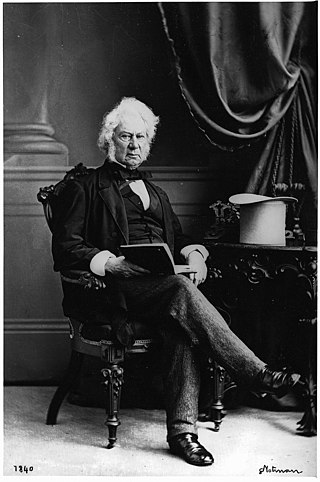
Benjamin Holmes was a Lower Canada businessman and political figure. He served in the militia of Lower Canada during the War of 1812, including a period of captivity by the American forces. He joined the Bank of Montreal shortly after it formed in 1817, and rose to be the cashier by 1827. He was twice a member of the Legislative Assembly of the Province of Canada. In spite of his service in the War of 1812, he was a supporter of annexation by the United States in the late 1840s, and a signatory of the Montreal Annexation Manifesto. He became a vice-president of the Grand Trunk Railway, and also a director of the Bank of Montreal.
Jonas Phillips Phoenix was a U.S. Representative from New York, serving two nonconsecutive terms from 1843 to 1845, and from 1849 to 1851.

The Livingston family of New York is a prominent family that migrated from Scotland to the Dutch Republic, and then to the Province of New York in the 17th century. Descended from the 4th Lord Livingston, its members included signers of the United States Declaration of Independence and the United States Constitution. Several members were Lords of Livingston Manor and Clermont Manor, located along the Hudson River in 18th-century eastern New York.

Thomas William Anson, 1st Earl of Lichfield PC, previously known as The Viscount Anson from 1818 to 1831, was a British Whig politician from the Anson family. He served under Lord Grey and Lord Melbourne as Master of the Buckhounds between 1830 and 1834 and under Melbourne Postmaster General between 1835 and 1841. His gambling and lavish entertaining got him heavily into debt and he was forced to sell off the entire contents of his Shugborough Hall estate.
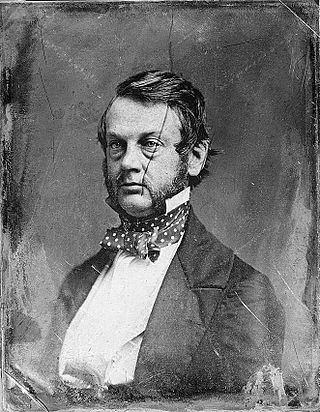
William Murray was an American banker and politician who served two terms as a United States representative from New York from 1851 to 1855.
Sir John Easthope, 1st Baronet MP was a politician and journalist.
Lewis Nockalls Cottingham was a British architect who pioneered the study of Medieval Gothic architecture. He was a restorer and conservator of existing buildings. He set up a Museum of Medieval Art in Waterloo Road, London with a collection of artefacts from demolished buildings and plaster casts of the medieval sculpture.
Zaccheus Collins Lee was a Jurist, who served as U.S. Attorney for the District of Maryland.

Sir Moses Haim Montefiore, 1st Baronet, was a British financier and banker, activist, philanthropist and Sheriff of London. Born to an Italian Sephardic Jewish family based in London, after he achieved success, he donated large sums of money to promote industry, business, economic development, education and health among the Jewish community in the Levant. He founded Mishkenot Sha'ananim in 1860, the first Jewish settlement outside the Old City of Jerusalem.

Edward Haycock Sr. was an English architect working in the West Midlands and in central and southern Wales in the late Georgian and early Victorian periods.
Admiral Talavera Vernon Anson was a Royal Navy officer who took part in the Greek War of Independence and the First Opium War.
Thomas Hawkes (1778-1858) was an English industrialist and politician. He inherited a glass-making business from his father. He was elected as MP for Dudley in 1834, defeating the sitting candidate, Sir John Campbell. He thus became the second person to represent Dudley at the UK Parliament. He retained his Parliamentary seat in three subsequent elections, stepping down in 1844 after having financial problems. He served as Sheriff of Worcestershire in 1811 and he was appointed as captain of the Himley Troop of the Staffordshire Yeomanry in 1819, in which he served for more than twenty years. One of his daughters married the brother of Baron Ward, the Lord of Dudley Castle. He was declared bankrupt shortly before his death in 1858.

Charles Linsley was a Vermont lawyer and politician. The son-in-law of Daniel Chipman, he was notable for his service as United States Attorney for the District of Vermont (1845-1849), member of the Vermont House of Representatives (1858-1859), and U.S. Collector of Customs for Vermont (1860-1861).
References
- ↑ Habgood, Judith. "Chapter 5: Mary Ann". Habgood versus Habgood in Chancery. Retrieved 28 December 2023.
- 1 2 Habgood, Judith. "Chapter 9: George Alfred Muskett". Habgood versus Habgood in Chancery. Retrieved 28 December 2023.
- ↑ Langsdale, Simon (13 July 2018). Thomas Ward Blagg and the Abbey Parish Charities Scandal c.1827-1860 (Thesis). pp. 64–65. doi:10.18745/th.20277.
- ↑ M. Stenton, ed. (1976). Who's Who of British Members of Parliament: Volume I 1832-1885. Harvester Press. p. 85.
- 1 2 Langsdale, Simon (13 July 2018). Thomas Ward Blagg and the Abbey Parish Charities Scandal c.1827-1860 (Thesis). p. 88. doi:10.18745/th.20277.
- ↑ "Law of Libel". Carlisle Journal. 21 January 1843.
- ↑ "Sudden Death of George A. Muskett Esq". Freeman's Journal. 3 February 1843.